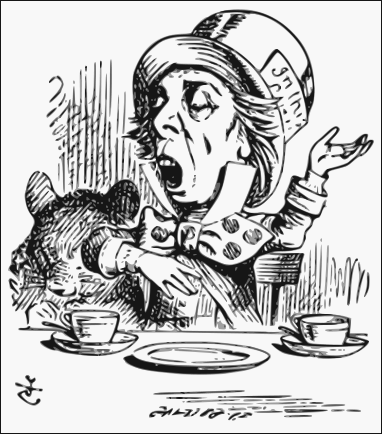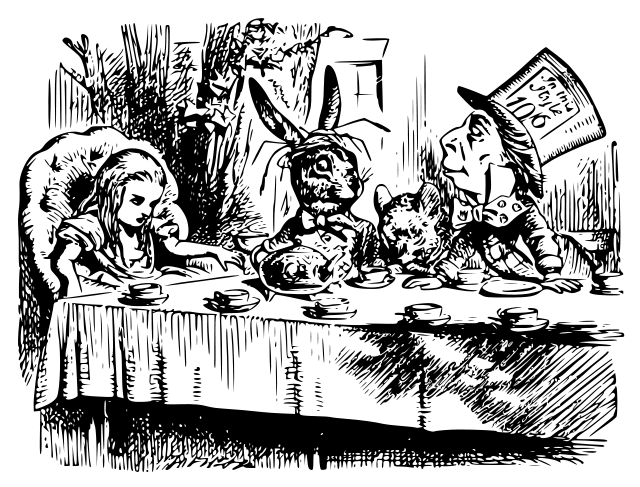
The Hatter, illustrated by John Tenniel 1865
If you have ever read Lewis Carroll’s Alice’s Adventures in Wonderland, you may have noticed that the author never actually uses the name “Mad Hatter” in his book. Still, it is by this name that the tea party’s Hatter is popularly known. Why is this?
The Hatter certainly acts quite silly, and the Chesire Cat warns Alice that the Hatter is “mad”, or insane. But there’s more to the story than this. The name “Mad Hatter” comes from the old phrase “mad as a hatter”. The saying was popular years before Lewis Carroll’s book came along.
A hatter of course was a tradesman who made hats for a living. Hats were very popular in North America and Europe during the early industrial era, especially felt hats such as the top hat. The best kind of hats were made from beaver fur, which was relatively rare and therefore costly. Cheaper hats used more common furs such as rabbit.
The processes involved in making these cheap felt hats was complicated — and dangerous. To make felt, the hatters would first brush a mercury solution onto the fur to make it rough. They would work with the mercury in poorly ventilated workshops and breathe it in while they worked.
Today, we understand that mercury is a poison which builds up in our bodies and does damage to the kidneys and brain. After long-term exposure to mercury during felt-making, hatters would often come down with many physical symptoms such as trembling (“hatter’s shakes”) and drooling, as well as mental effects: irritability, paranoia, anxiety, depression, loss of memory, and other changes to their personalities. They appeared to go “mad”.
“Mad Hatter’s Syndrome” is still used to describe the symptoms of mercury poisoning. Thankfully, we have learned the poisonous effects of mercury and no longer use it to make felt hats. It is only through sources such as Lewis Carroll’s Alice’s Adventures in Wonderland that the “Mad Hatter” still exists today.

Illustration by John Tenniel
